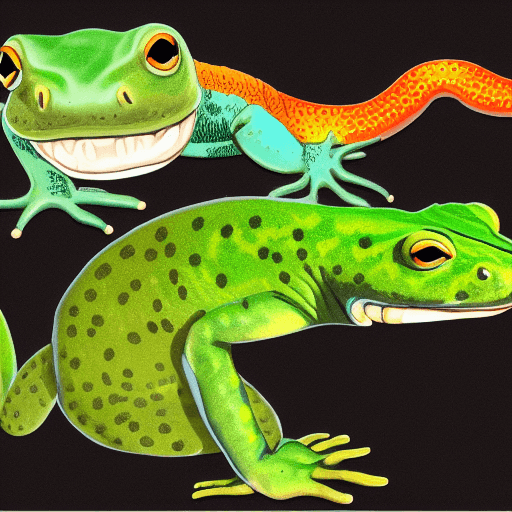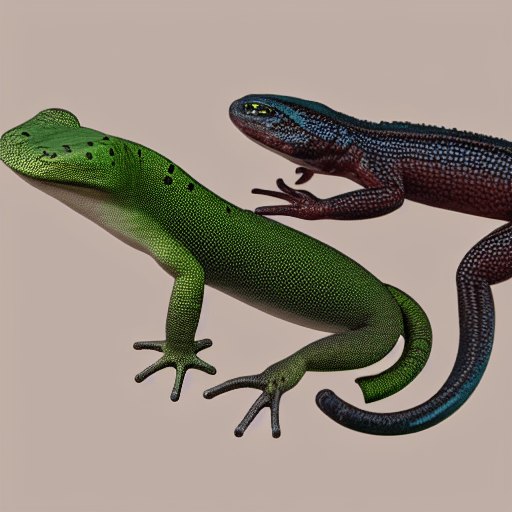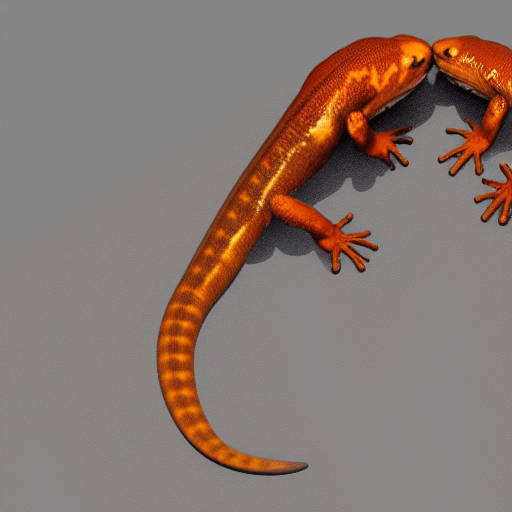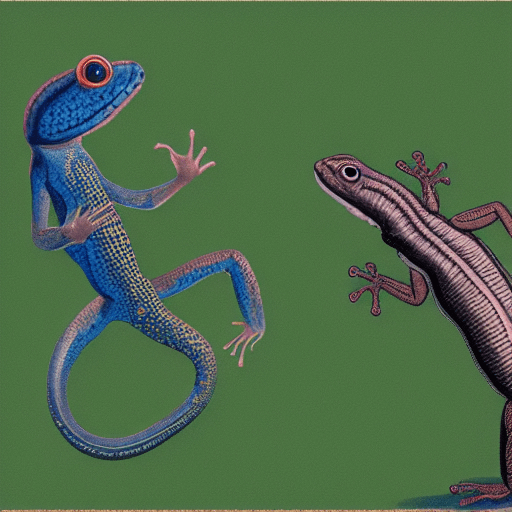Salamander vs lizard. What are the differences between them? Which one is better?
Let’s explore the similarities and differences between salamanders and lizards.
We will also discuss which one is better for you to own as a pet.

There are a few key differences between salamanders and lizards.
For starters, salamanders are amphibians, meaning they can live in both water and on land, while lizards are reptiles, meaning they can only live on land.
This is why you often see salamanders near bodies of water – they need to be able to return to the water to breathe since they don’t have lungs as we do.
Lizards also have scales on their skin, which helps them stay cool in warm climates, whereas salamanders have smooth skin.
Finally, one of the most distinguishing features of a salamander is its tail – many species of salamander can regenerate their tails if they lose them.
What are the key differences between salamanders and lizards?
Though they may look similar, salamanders and lizards are actually two very different kinds of animals.

- For one thing, salamanders are amphibians, meaning that they can live both in water and on land, while lizards are reptiles, which means that they can only live on land.
- In addition, salamanders typically have moist skin, while lizards have dry skin.
- Another key difference is that salamanders almost always have four legs, while some lizards (such as snakes) have no legs at all.
- Finally, salamanders tend to be smaller than lizards, though there are exceptions to this rule.
Though they may appear to be similar at first glance, upon closer inspection it is clear that salamanders and lizards are quite different creatures.
What are the similarities between salamanders and lizards
Although salamanders and lizards may look very different, they actually have quite a lot in common.

Both groups of animals are reptiles, meaning that they have dry, scaly skin and are ectothermic, or cold-blooded.
This means that they are unable to regulate their own body temperature and must rely on external sources of heat, such as the sun.
In addition, both salamanders and lizards are tetrapods, meaning that they have four appendages.
However, there are some significant differences between these two groups of animals. Salamanders typically have shorter legs than lizards and lack claws, while lizards typically have longer tails than salamanders.
In addition, salamanders typically live in moist environments and lizards typically live in dry environments.
Although they have some significant differences, salamanders and lizards share several important similarities.
Salamander vs lizard habitat
Salamanders and lizards are both amphibians, but they have different habitats.

Salamanders prefer cool, moist environments like forests and swamps.
In contrast, lizards prefer warm, dry environments like deserts and grasslands.
As a result, salamanders are more likely to be found in the northern hemisphere, while lizards are more likely to be found in the southern hemisphere.
Although they have different preferred habitats, both salamanders and lizards can be found on all continents except Antarctica.
Which one is better for you to own as a pet a lizard or a salamander?
Salamanders and lizards are both popular pet options, but there are some key differences between the two.
- Salamanders tend to be smaller than lizards, and they also have moist skin, which means they require a different habitat.
- Salamanders also typically live shorter lives than lizards.
- When it comes to personality, salamanders are generally shy and reclusive, while lizards can be quite active and social.
- Ultimately, the best pet for you depends on your personal preferences.
If you’re looking for a low-maintenance companion, a lizard may be the better option. But if you’re more drawn to shy and delicate creatures, a salamander could be the perfect pet for you.
How can you take care of a salamander or lizard as a pet owner?
As a pet owner, it is important to take care of your animal by providing food, water, and shelter.
It is also important to meet their needs for exercise and stimulation. Salamanders and lizards are no different.
In fact, they have some specific needs that must be met in order to keep them healthy and happy.
Here are some tips for taking care of a salamander or lizard as a pet owner:
First, salamanders and lizards need a warm, humid environment in order to thrive. This means that you will need to provide an appropriate terrarium or vivarium for your pet.
The terrarium should be large enough for your pet to move around freely and should include hiding places, branches, and rocks.
You will also need to maintain the correct temperature and humidity levels within the terrarium.
Secondly, salamanders and lizards need a nutritious diet in order to stay healthy.
This means feeding them live food such as insects, worms, and small rodents. It is also important to dust their food with calcium powder in order to prevent metabolic bone disease.
Finally, salamanders and lizards need regular exercise in order to stay active and healthy. This means providing them with a large enclosure where they can roam around.
Although they have some significant differences, salamanders and lizards share several important similarities.
Article Sources
Jacks of Science sources the most authoritative, trustworthy, and highly recognized institutions for our article research. Learn more about our Editorial Teams process and diligence in verifying the accuracy of every article we publish.
